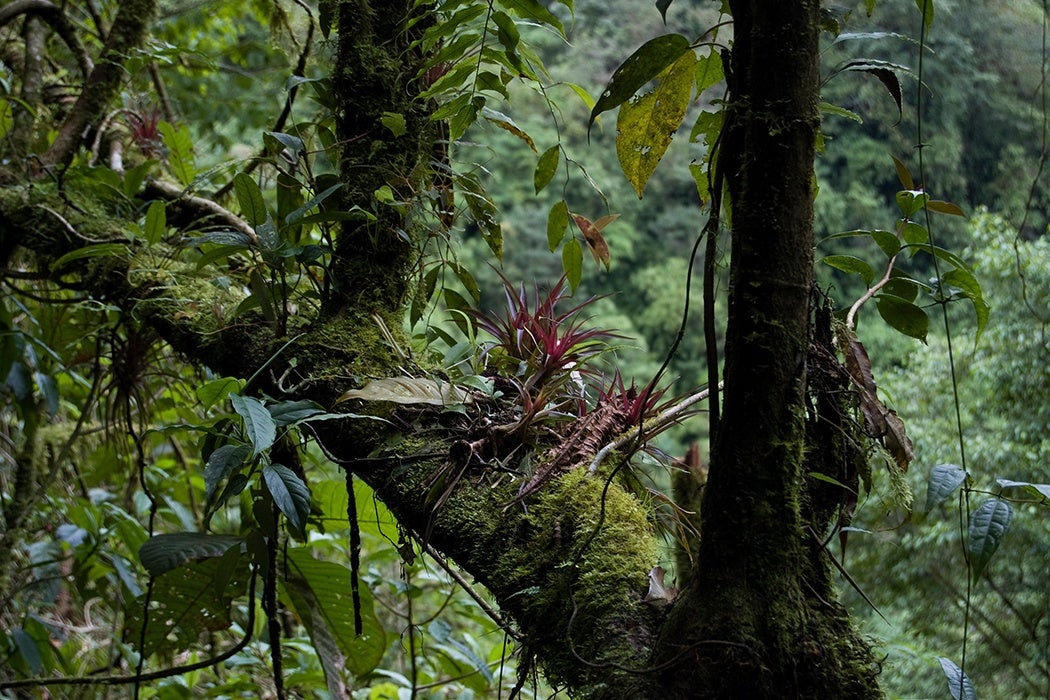You probably think of ants as living in those dusty little hills that you accidentally kick on the sidewalk. But high above neotropical rain forests, certain ants create elaborate nests. The ants share their nest with numerous species of epiphytes, AKA non-parasitic plants that grow on other plants. Some of these plants only grow in or near ant nests. Clearly, these ant gardens are not ordinary anthills.
The plants do not grow in ant nests by accident. Ants deliberately seek out epiphyte seeds, sometimes harvesting seeds directly from animal feces. The ants then plant the seeds inside their nests, and tend each plant carefully. Ant nests turn out to be a fruitful environment for a plant; the nest material, called carton, is a mix of animal poop, soil, ant secretions, and plant matter. The ants plant many different species of epiphyte, which take root in the rich carton. The ants haul additional vertebrate poop back to the nest to use as fertilizer. The result is a hanging garden that rivals dreams of Babylon.
Why go to the trouble? Life in the rainforest canopy is not easy. There is limited soil in the canopy where plants can take root. With little protection from rain and wind, it is also a dangerous environment for an ant nest. Here is where the gardens come in. The ant nest provides a suitable perch where the plant can take root, and the ants themselves provide fertilizer. In return, the roots of the epiphytes help provide support for the ant nests, the insect equivalent of reinforced concrete. Some species also let larvae nibble on the seeds, but not to the point that germination is inhibited.
This isn’t the end of the cooperation between ants and plants, either. Many gardens are occupied by two different species of ants, sharing foraging trails but occupying different chambers within the garden. The smaller of the two species is physically unable to help supply the garden, and their role in the association is unclear. They may be freeloaders, taking advantage of protection offered by their larger neighbors. On the other hand, the small ants tend “flocks” of insects, which may provide a snack for the larger garden builders. The entire nature of the relationship is not clear.
The evolutionary origin of the ant garden is also not completely clear. Some of the ant behaviors are present in non-gardening ant species. On the other hand, the seeds of different epiphyte species found in the gardens exude a particularly attractive scent, possibly evolved to attract ants. Coevolved or not, it’s a successful model. In some places, gardening ants are the most common ants found in the canopy. This is especially true where the forest regularly floods, and a fallen nest would result in catastrophe. The stakes are high; these ants know their stuff.







